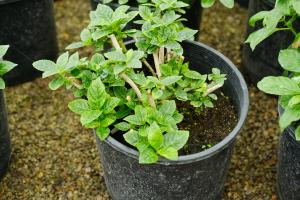Can You Plant a Tree on Public Land in the UK?
Planting a tree on public land is something many people may be interested in doing as an act of charity, beautification, or to reduce the carbon footprint. But, can you legally plant a tree on public land in the UK? The answer is not straightforward, and it depends on various factors, which we will explore in this article.
What is Public Land?
Public land refers to any land owned, controlled or leased by the government or the local authorities. This could include parks, roadsides, public forests, and other green spaces. As a general rule, public land is supposed to be available for the use and enjoyment of all members of the public, subject to the regulations that apply for its management.
Who has the Authority to Plant a Tree on Public Land?
The authority to plant a tree on public land varies depending on who the land belongs to. If the land is owned or leased by a local authority, they have the responsibility for managing and maintaining the land. In such cases, planting trees on public land will require permission from the local authority. This is because they will need to assess the suitability of the place, assess any environmental or ecological risks, and ensure that any planting activities are done in compliance with relevant laws and regulations.
If the public land belongs to the government, then the authority to plant trees on such land may come from the Department for Environment, Food, and Rural Affairs (DEFRA). It is important to note that there are specific guidelines and regulations that apply to planting trees on government land, and these need to be followed to ensure compliance.
What is the Process for Planting a Tree on Public Land?
The process for planting trees on public land varies depending on the local authority and the landowner. However, as a general rule, the following steps may be involved:
Contact the local authority or the landowner to assess their attitude towards planting trees on public land.
If the local authority or the landowner agrees to the planting, conduct a site assessment to determine whether the location is suitable for tree planting. This could include assessing soil quality, water supply, and environmental factors.
Obtain any necessary licenses or permits required for tree planting activities.
Select the correct species of trees for planting based on the local environment and the landowner's preferences.
Plant the trees following best practices and guidelines for tree planting. This could involve using appropriate planting techniques, using any necessary fertilizers, and providing the trees with proper maintenance services such as watering, pruning, and pest control.
Once the trees are planted, submit a report to the local authority or the landowner detailing the planting activities and any necessary follow-up activities required for tree maintenance and care.
In Conclusion
Planting trees on public land is a noble act that can create numerous benefits for both the environment and the community. However, it is important to follow the necessary guidelines and regulations to ensure that the planting activities are compliant with the law and safe for the environment. If you are interested in planting trees on public land, it is essential to obtain permission from the local authority or the landowner and follow the necessary procedures to ensure success.

 how many times do yo...
how many times do yo... how many planted tre...
how many planted tre... how many pine trees ...
how many pine trees ... how many pecan trees...
how many pecan trees... how many plants comp...
how many plants comp... how many plants can ...
how many plants can ... how many plants and ...
how many plants and ... how many pepper plan...
how many pepper plan...






























